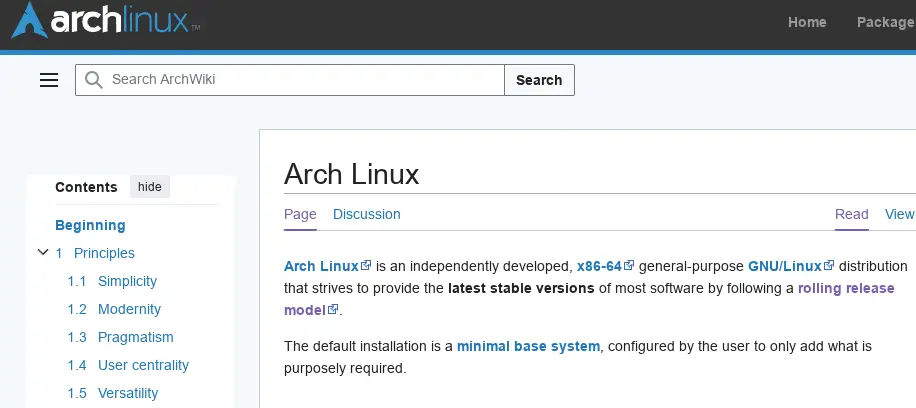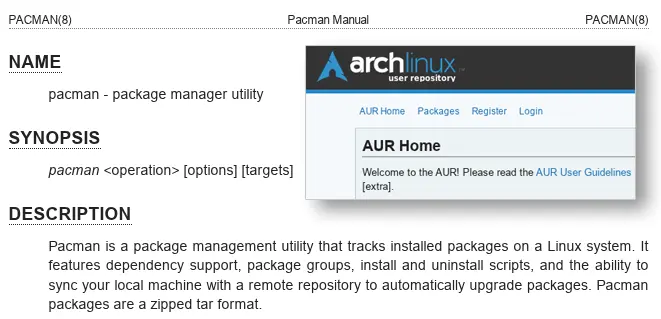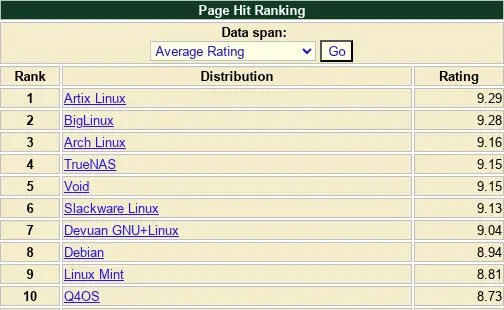
Often views as intimidating and difficult-to-learn, in reality Arch Linux is a perfect blend of simplicity, control, and stability. Let's examine in detail what makes Arch a top choice for your desktop operating system.
The Arch Way
The core of Arch Linux is its principles, informally known as The Arch Way. These values are what make this distribution so simple and stable, despite rolling releases. Let's review each of these and why they are important:
- Simplicity - by minimizing changes to upstream code, Arch hopes to avoid creating new bugs or edge cases. Moreover, by giving users a simple base installation, on top of which you can add what you want, it avoids bloat and extraneous software which would add complexity
- Modernity - unlike many other popular distros, the software in Arch is always up-to-date. This allows users to get access to new features, bugfixes, and newer hardware support more quickly
- Pragmatism - long before The Great Init System Debate, Arch had already decided to make systemd the default init system with reasons outlined here. This decision was clearly focused on the practical benefits of systemd and the real limitations of System V rather than politics or loud opinions. Within the next several years, most other major distributions followed suite and adopted systemd too
- User centrality - it may seem counter-intuitive, but the fact that Arch doesn't give you a simple point-and-click installer and ready-made desktop environment is a feature, not a limitation:
- by introducing users to the fantastic Arch Wiki from the beginning, it helps ensure that you know where to find documentation in the future
- by starting users from a command line base install, it empowers you to choose which desktop environment and features work for you
- Versatility - By giving users a base system of binary packages, but also a huge list of additional source packages in the AUR, Arch gives users complete choice and control over the type of distro they want. If you don't want to build from source, you don't have to. If you do, you can
Fantastic Documentation

A rolling release distro like this could not succeed in stability and ease of use without phenomenal, comprehensive, and up-to-date documentation. Containing documentation for numerous parts of the OS and answers to many common problems, The Arch Wiki delivers on all of these and is even a common reference point for users of other distributions. Numerous times, when I've encountered a problem with Arch, a simple web search will bring up a post on the Arch Wiki , the forums, the news, or the mailing list describing my exact problem and the steps needed to solve it.
For new users getting started, the Installation Guide walks you through the process step-by-step so that you're supported at each stage of installation.
The absence of good documentation like this can make the barrier to entry extremely high and limit growth of a distro - NixOS is a great example of this. Despite its modern design, unique and powerful features, and seemingly simple configuration, NixOS has a high learning curve due to its lack of high-quality, consistent documentation as outlined in this thread.
Package Management Perfection

Arch appears to provide the perfect balance between an all-source distro like Gentoo or an all-binary distro like Debian. The fact that many common packages are available in the official Arch repositories as binary packages means you can get up and running quickly by installing them with pacman. Yes, these packages aren't 100% optimized for your exact hardware, as they would be on Gentoo, but this seems like a reasonable balance between speed and convenience. For software not available in the official repos, or development versions of software, Arch has the Arch User Repository, or AUR for short. The AUR is simply a collection of PKGBUILD files, simple text files that define the metadata for a package and provide the URL of the source code and installation commands. To install a piece of software from the AUR, simply download the PKGBUILD and use makepkg to build a binary package and then install it with pacman.
Paradoxical Stability

Despite being a rolling release distro, which is often equated with instability, Arch Linux has proven to be remarkably stable. It is not uncommon for Arch users to use the same installation for years, with no noticeable slowdowns or stability issues. In short, it "just works". Moreover, when something does break, the community and documentation (as described above) often yield a solution quickly.
While other distros are often stable, they may sacrifice access to up-to-date software to achieve that stability. Arch, for desktop use, seems to have found a way to have the best of both worlds.
For more details on how Arch compares to other popular distros, see this in-depth comparison.
Proven Popularity

Despite the endless creation of new Linux distros, Arch Linux remains one of the top 5 rated distros on the popular DistroWatch website. It's impressive that a 20+ year-old distro can remain steadily committed to its principles and deliver a consistently high-quality product, despite a changing landscape. If you haven't yet tried Arch, you should give it a try today!
